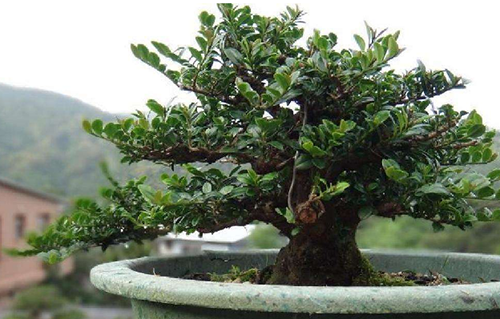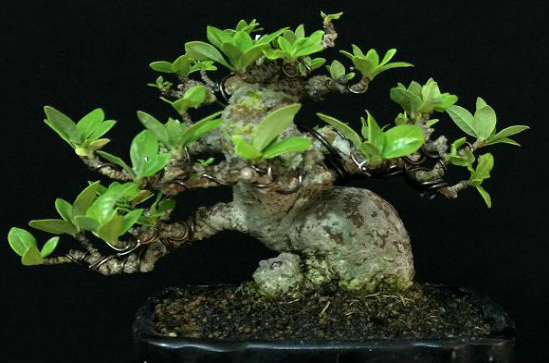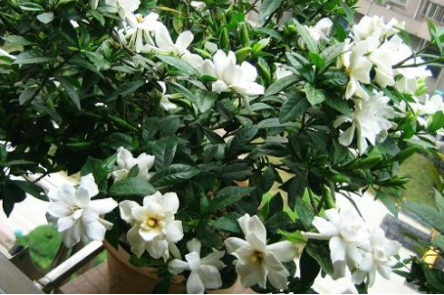Treatment of falling leaves of lobular red sandalwood bonsai
Lobular red sandalwood is a tropical plant, has a great demand for water, if not watered, it will cause withered leaves, thus falling. So if your lobular rosewood is withered, then you should pay attention to watering every few days. But not too much watering, most plants too much watering will cause rotten roots, so it will also lose leaves.
Another possibility of withered leaves is soil consolidation, because the soil is hardened and impervious, so the poured water can not enter the roots, causing the leaves to lose water and dry up and fall. You can choose some soft soil to grow lobular red sandalwood.
Lobular red sandalwood leaves are also due to lack of light, because lobular red sandalwood is a green plant, the need for photosynthesis is relatively strong, so it needs sufficient light to provide enough nutrients for its own growth. So it is best to put your lobular red sandalwood in the sunny place to grow.
In addition, you should also pay attention to the impact of diseases and insect pests on lobular red sandalwood, as well as the appropriate amount of fertilizer in the maintenance process.

The value of lobular red sandalwood bonsai
Lobular red sandalwood is the raw material of mahogany furniture and belongs to scarce resources. Many people will invest in planting lobular red sandalwood. The mature lobular red sandalwood has a remarkable reputation and has a very high market valuation. As a flower lover, if only to watch lobular red sandalwood, it is also a well-deserved first choice. Lobular red sandalwood belongs to one of many tree species, the leaves are verdant and dense, and the feeling of spring is very obvious. Give people a suddenly enlightened state of mind.
Have you learned how to deal with the leafy red sandalwood bonsai with fallen leaves? If your lobular red sandalwood has lost its leaves, please deal with it in time. We cherish our plants, and the plants will repay you with their beauty.
Appreciation of peony bonsai
Bonsai is a unique and beautiful garden art treasure in China, which has a history of 1500 years. It is an ingenious combination of potted technology and plastic arts, an organic unity of scenery, pots and frames, on a par with traditional arts such as painting, calligraphy, sculpture and music. It is called "silent poetry, three-dimensional painting". Peony bonsai is a new kind of bonsai, which combines magnificent peony with simple and elegant bonsai art to form an art form with unique Central Plains style, which is praised by bonsai experts and scholars in our country. Chinese bonsai master Chen Sifu praised: "Peony bonsai shows bonsai charm and picturesque poetry." Chinese bonsai artist he Xunsun said: "taking a comprehensive view of the bonsai works of peony, it reflects that the bonsai works of peony are beautiful in shape, appropriate in material selection, suitable in configuration, tuned and unified, such as' Fang 'with proper stone, strong and soft complementary; the branches of' Jing 'are ancient and relaxed; the contention of' hometown 'echoes and is full of wild interest; the composition of' the rhyme of Tang and Song dynasties'is complete and elegant. The combination of withered wood and spring, the combination of deficiency and reality, and so on, reflects the artistic attainments of these peony bonsai. It is the sublimation of the artistic beauty of peony planting. " Chinese bonsai artist Meng Lanting called the peony bonsai "an unprecedented initiative." The appreciation of peony bonsai is roughly the same as other bonsai. Such as one view (pile view), two appreciation basin, three appreciation several, four appreciation name (proposition) and so on. Pile view peony pile view, can be watched in four seasons. View flowers in spring and summer, leaves in summer and autumn, buds in winter and spring, dry in winter. In order to get richer ornamental content than ordinary peonies, breaking the habit of simply watching flowers for thousands of years. View stem: the peony branch is stout, the bark is grayish brown or dark brown and mottled. After plastic arts treatment, there is a thousand-year-old pine state, a century-old plum bone, or tall, or hanging, or lying, or oblique, "hidden earth-shaking meaning, with the potential of Qiu long hundred feet." Flower viewing: peony bonsai is mainly to watch flowers. Its flower shape is changeable, the flower color "red orange yellow green blue blue purple" has everything, the flower fragrance is overflowing, the pot is in a few graceful peony flowers, will make you endless aftertaste. View leaves: peony leaves are beautiful, pinnate compound leaves, green leaves in spring, yellow, red, purple and other colors after autumn frost, very beautiful and eye-catching, with the charm of "layer forest dyed". Watch the bud: watch it from the fallen leaves to the early spring, and its buds are of different colors. The bud color is red, pink, purple, etc., and the bud shape is torch-shaped, olecranon-shaped, narrow-pointed, etc., which can make people imagine. View the fruit: the fruit is odd fruit, that is, the fruit is arranged in a radial wheel of about five egg-shaped fruits, seen from afar, like the "starfish" in the sea and the "five-pointed star" on the national flag. View the root: after the peony is "exposed to the root", people can directly see the intertwined peony root. Give people strong strength and the beauty of nature, so that people's desire to return to nature has been met. The use of potted peony bonsai is very fastidious, and the painting "Peony" has to be set off through the "background color". Whether using Jingdezhen colored porcelain, blue and white porcelain landscape basin, or matching Yixing purple sand basin, it must reflect the elegance and elegance of peony. It is best to have simple and elegant colors and colorful old famous pots, especially those in the Ming and Qing dynasties. Choose more circular shallow basin, ancient printing basin, Yuanpeng basin, cylinder basin, color to bronze, incense, black and green, sesame, scarlet metallurgy, grape purple for the most beautiful. The "calligraphy" related to peony engraved on the basin is the best. Appreciate several frames to place peony bonsai to be very elegant. It is to improve the status of bonsai space, separate the connection between bonsai and the ground and the surrounding environment, make it stand out and further set off the peony bonsai. The aircraft itself is a work of art. Now mostly use imitation Ming, Qing style, Ming style concise and generous, simple and honest; multi-use yellow rosewood, rosewood, shallow color, obvious wood grain. Qing style carving is fine and rich, mostly using red sandalwood and mahogany, both of which have higher technological achievements in the Ming and Qing dynasties. Modern use of mahogany, red sandalwood, boxwood production, the wood is delicate and hard, bright and bright color. In addition, it is also made of imitation mahogany and rosewood. Because of its fine craftsmanship, the ornamental effect is also good. The styles are "Book number", "return pattern", "Bogu Shelf", "Xiaoqin Table", "Root carving", "Tang Sancai Drum" and so on. Those carved with peony patterns are the best. The concept of bonsai appreciation is very important, which can increase the ideological and artistic nature of the works and further express the artistic conception. Chinese painting pays attention to the artistic effect of poetry, book, painting and printing, and the proposition of peony bonsai, like scenery, basin and several, is an indispensable part. Express the content and spirit of the work with concise and general words and sentences, which plays the role of the finishing touch. We can use "national color and heavenly fragrance" to reflect the position of peony in the eyes of the Chinese people; we can show the beauty of peony and bonsai at the same time; we can use "the rhyme of Tang and Song dynasties" to express the ancient history of peony, which makes people look back to the present and go back to the past. In short, through the limited landscape in the basin, there are infinite associations, so that the viewer has endless aftertaste. In addition, the decoration of the basin surface is also very important, such as stone, point moss, planting small turf and the treatment of topography and landform, and the placement of various accessories (pavilions, platforms, buildings, pavilions, towers, pavilions, rafts, bridges, people and various animals), and so on. Peony is very particular about stone matching. There are "Peony Stone Pictures" in Chinese paintings. It is common that peonies depend on Taihu Lake stone, quartz stone and bamboo shoot stone, making the landscape more vivid and changeable, the composition more perfect, and more mountain flavor. Cloth moss or cloth makes the basin green, full of vitality and closer to the landscape of nature. The placement of accessories makes the picture more poetic. Peony bonsai masterpiece appreciates peony bonsai "National Color and Tianxiang": it won the prize of the second bonsai art evaluation exhibition of Henan Province in 1985. The work adopts the stone-attached style, standing in a rectangular light purple sand basin with exquisitely carved Taihu Lake stone, several peonies passing through the stone holes, the branches are old and vigorous, and the branches are in full bloom. There are also two peonies waiting to bloom at the stone root, the whole work is hierarchical, the composition is perfect, and the picture is fresh, just like a freehand "Dan Shi Tu" ancient painting. Peony bonsai "Rhyme of Tang and Song dynasties": won the excellent work Award of the second Chinese Bonsai Art Evaluation Exhibition in 1989. The work uses a single-stem modeling method, planting a tall and straight peony in a purple sand gold bell basin with a round bottom, with free and easy branches and leaves, distinct layers, stout and mottled trunk, bare roots and intertwined roots, just like a thousand-year-old wood. There is a lying stone beside the root, the moss on the edge of the stone, and the drum table of the Tang Dynasty tricolor antique peony pattern under the basin. There are several peonies in full bloom at the end of the pile, with local characteristics and artistic effects, so it has the legacy of peonies of the Tang and Song dynasties.
- Prev

Culture method of Gardenia jasminoides
1. Soil. Lobular gardenia is usually planted in a pot for ornamental, so breeding lobular gardenia, potted soil is very important. Lobular gardenia is suitable for slightly acidic soil with good loose drainage, so rotten leaf soil or fertile peat soil can be selected for cultivation. 2. Lighting
- Next

The cause and solution of yellowing of leaves of Gardenia jasminoides
1. Lack of iron and magnesium. When plants are growing, some necessary trace elements can not be lacking. Once lacking, the leaves will lose green and turn yellow. Leaflet gardenia leaves yellowing should be carefully observed, if the yellow develops from the edge to the veins, the veins fade, and the leaves wither and turn yellow.
Related
- Fuxing push coffee new agricultural production and marketing class: lack of small-scale processing plants
- Jujube rice field leisure farm deep ploughing Yilan for five years to create a space for organic food and play
- Nongyu Farm-A trial of organic papaya for brave women with advanced technology
- Four points for attention in the prevention and control of diseases and insect pests of edible fungi
- How to add nutrient solution to Edible Fungi
- Is there any good way to control edible fungus mites?
- Open Inoculation Technology of Edible Fungi
- Is there any clever way to use fertilizer for edible fungus in winter?
- What agents are used to kill the pathogens of edible fungi in the mushroom shed?
- Rapid drying of Edible Fungi

